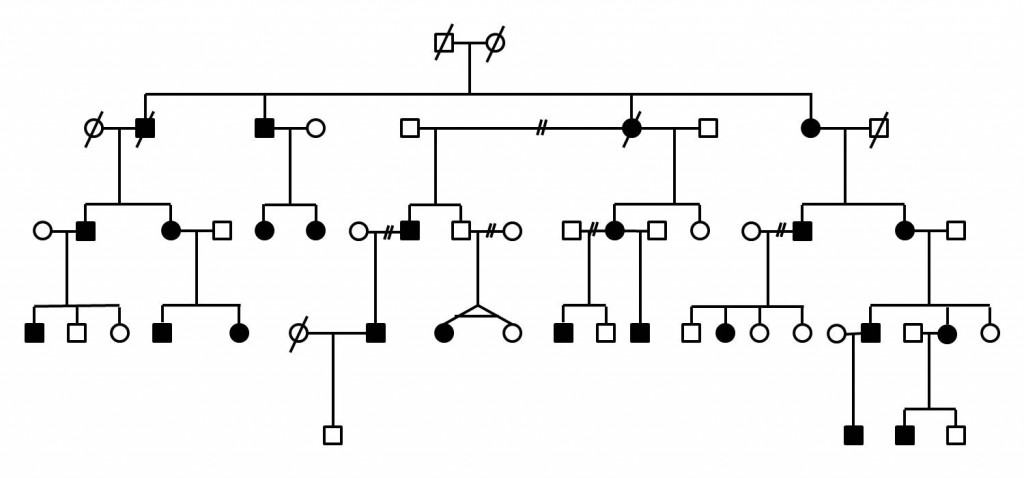ABOUT MYOPIA
Myopia (nearsightedness) is one of the most common eye disorders in the world with approximately 33% of Americans being affected. The lens of the eye in myopic people does not focus light on the retina, the portion of the eye that turns light into information our brain processes. This results in objects that are farther away appearing as though you were looking through an out of focus camera with the image being blurry or fuzzy. The severity of myopia is measured in diopters with 0 being normal and anything below that being myopic. The error can come from a misshapen lens or cornea, or from an elongated eye.


High myopia is a particularly severe (-6.00 diopters or less) form of myopia in which the eye length continues increasing. This causes not only continuing vision deterioration, but the increasing length puts strain on the retina and other eye structures which results in greater risk of retinal detachments, early development of cataracts and glaucoma. This type of myopia is usually seen running in families. It can then be concluded that the disorder is inherited from the parents of the affected individual. The Young lab is currently working on genetic profiles of affected families in order to try to determine the genetic changes that result in the development of high myopia.
Facts About Myopia – National Eye Institute
OUR RESEARCH
The primary area of research focus in our laboratory has been the molecular genetics of high-grade myopia (refractive error of -6.00 diopters or greater). We have collected several hundred families (see example pedigree below) with high-grade myopia, and have performed genome screens to map the genes involved. Linkage mapping has identified several published candidate gene regions. We are continuing to collect families with high-grade myopia, using linkage and deep sequencing technologies to identify novel candidate genes. We believe that the findings from our research endeavor will impact the understanding of eye growth and development (myopic eyes are bigger and longer), may allow for molecular interventions to be developed to prevent the vision-threatening sequelae of high-grade myopia, and may contribute to our understanding of the genetics of common, complex quantitative trait disorders.

RECENT PUBLICATIONS
Our research on high myopia has focused on searching for genes that, when mutated, increase susceptibility to the development of high myopia. These studies are performed towards an end goal of developing sophisticated gene tests that can alert patients to their own susceptibility and to inform care providers so they may proactively treat the patient. Our hope is that a greater understanding of the genetics of high myopia will lead to a better understanding of the pathogenesis of the disease at a molecular level. This knowledge can then be utilized in the development of molecular interventions, such as pathway-targeted drugs or other therapeutics.
Exome sequence analysis of 14 families with high myopia
This publication involved the sequencing of the protein coding portions of the genome from various families with inherited forms of high myopia. This analysis yielded many new candidate genes for consideration in further studies of high myopia.
Trio-based exome sequencing arrests de novo mutations in early-onset high myopia
This work involved sequencing family trios – families consisting of 2 non-myopic parents and a young, high myopic child – to identify spontaneously occurring (de novo) sequence changes in the affected child that had not been inherited from either parent. This study led to the discovery of BSG gene variants in many of the children. Furthermore, mice harboring mutated BSG genes were generated and found to be myopic.
The CREAM consortium (Consortium for Refractive Error And Myopia) is a large, multinational group of researchers who work to further the understanding of the basis of myopia. Our lab worked in collaboration with this consortium to identify genetic sequence variants in children that associate with refractive error and myopia, and to also assess how their environment may have altered their disease risk. This research has helped to identify candidate genes that may be relevant to early-onset myopia, while accounting for the higher environmental risks in certain individuals.
This research was also performed in conjunction with the CREAM consortium to identify portions of the genome that may be associated with myopia, but also took into account the educational level of the individuals being analyzed. Education level can be seen as a risk factor for myopia, as reading has been strongly implicated as an environmental risk factor in multiple studies.
